When talking about the different types of suspension in
Mountain Bike There are generally talk of two general typologies:
Bicycles with front suspension and
Double suspension bicycles. However, in this last category it is convenient to know that not all rear shock absorbers are the same.
In this article we will deal with a topic that brings us to the head. After certain experiences and many hours of study, I will try to summarize the basic information that we must know about the rear suspension systems on mountain bicycles.
In this way it will be easier for us to know which of these systems is the most suitable for each type of mountain cycling.
>> Vertical cushion vs. Horizontal amaters, which one is better?
Mountain cycling types and suspension route
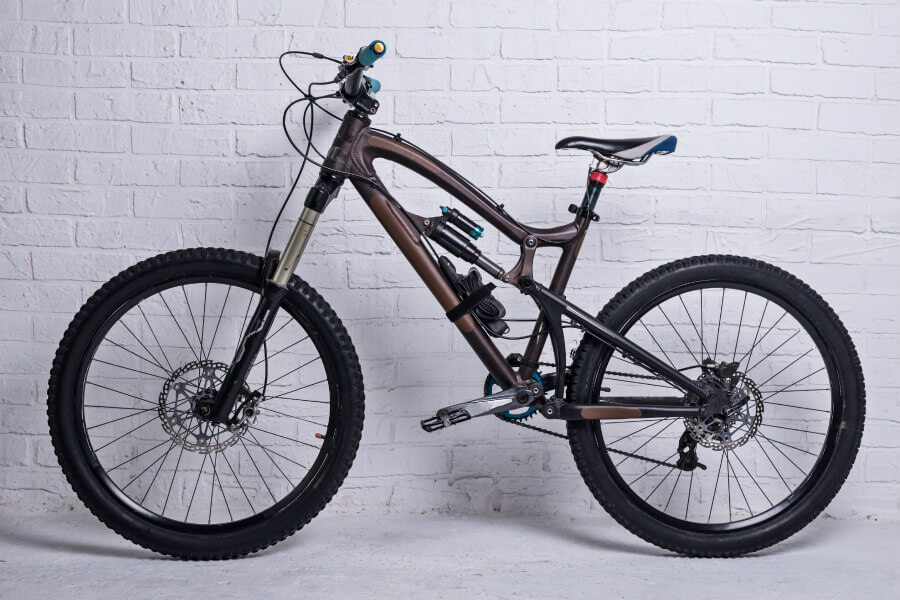
Not all bicycle modalities and geometries are equal within mountain cycling. Due to the type of land, speed, ups, decreases, etc. Each modality carries a different suspension route associated.
The suspension route is the depth in millimeters that can compress or spread the front fork bars and rear shock absorber to absorb the irregularities of the terrain. A greater route, greater damping capacity.
>> Guide to understand the different mountain cycling modalities
Rally and cross country bicycles (XC)
These types of bicycles are used to compete in explosive tests and circuits with continuous short but hard ups and descent. Efficiency in pedaling and braking is everything.
The suspension routes by bicycles of
Rally and
Cross country They are usually generally short, over 100 mm. In this modality it is also usual to see
Bikers Running by bicycles
Soft-tail either
Hardtail (semi-rigid).
>> See mountain bicycles for Cross Country
Marathon Bicycles (XCM) and Trail
This type of tests are usually longer, and even several stages. They are disputed in longer paths and less technical lands. The XCM is the most practiced modality.
They are routes of more than 50 kilometers where the ups and downs do not need high pedaling and braking performance, but rather prioritize comfort. In addition, if we talk about stages tests, this factor takes on even greater relevance.
The suspension systems tours in this type of bicycles are usually 120 mm., What we come to call trail bicycles today.
>> See trail mountain bikes
Enduro bicycles
The enduro is practiced by making very aggressive declines where, although the pedaling is not dispensed with, the ability to adapt to the terrain and absorption of Ireegularities by the suspension system is prioritized. They are very technical routes on paths in which you have to overcome stones, roots, trunks and other elements. The suspension routes are usually about 160 millimeters.
>> See bicycles to practice enduro
Descent bicycles
In the descent or
Downhill The pedaling is relegated to a second place. This modality is to launch at full speed downhill, jumping and raffling obstacles, so a high capacity is needed to absorb impacts, potholes, etc. The suspensions of this type of bicycles reach 180 mm.
>> See Descent Bicycles or Downhill
Types of suspensions according to the cycling modality
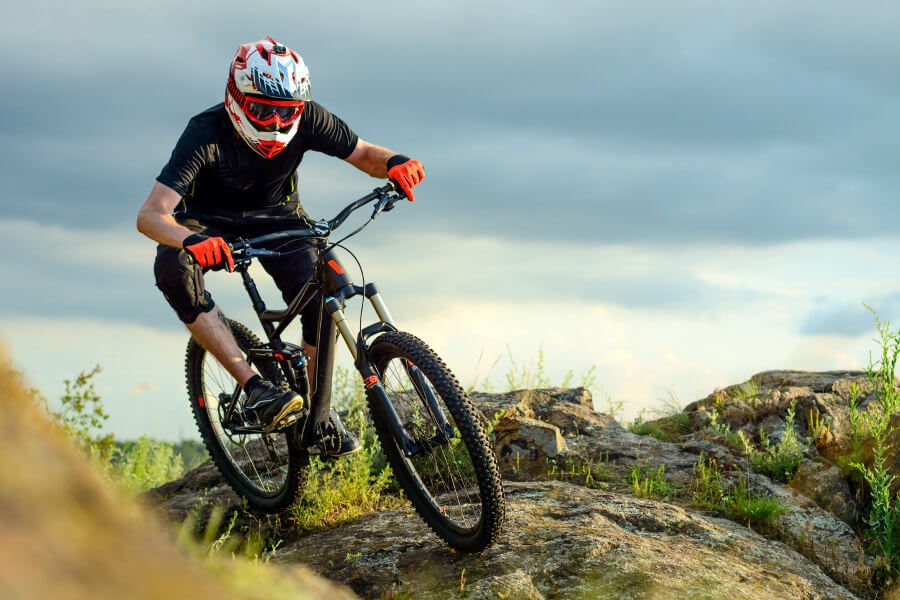
Depending on the cycling modality that we are going to practice it will be convenient to buy a bicycle with a type of suspension or another. Depending on the wheel on which the suspension acts we can classify mountain bicycles as follows.
Hardtail
Also known as semi rigid -although in Spain most call them rigid. They have only front suspension. They are used for testing
Cross country and
Rally.
Softail
In addition to the front suspension, they include a rear suspension system that gives us a small damping capacity, about 30 millimeters. The most famous system today is that of famous
Trek Procaliber waves
BMC Teamelite.
In these damping systems, it is played with the rear trench (the triangle) providing it with a point of union and turning with the painting, which generates a false feeling of damping. Actually for modalities such as XC is a great advance.
Full suspension
Here we talk about double suspension system bicycles. Apart from the front fork, they also carry a shock absorber on the rear wheel.
Depending on the type of bicycle and the cycling modality for which it is designed, the suspension routes both in front and behind vary between 100 mm and 180mm. In some cases, as extreme descent bicycles, they exceed 200mm.
>> See double suspension bicycles
Types of double suspension damping
Inside the bicycles
full suspension, known in Spain as "double suspension", there are several types of rear damping. Depending on the system used, they can generate more or less contamination in the pedaling, braking and cyclist's comfort during the route.
The types of rear shock absorber in double suspension bicycles are the following:
Virtual Pivot (VPP)
[Captation Id = "Attachment_4059" Align = "Alignnone" Width = "900"]
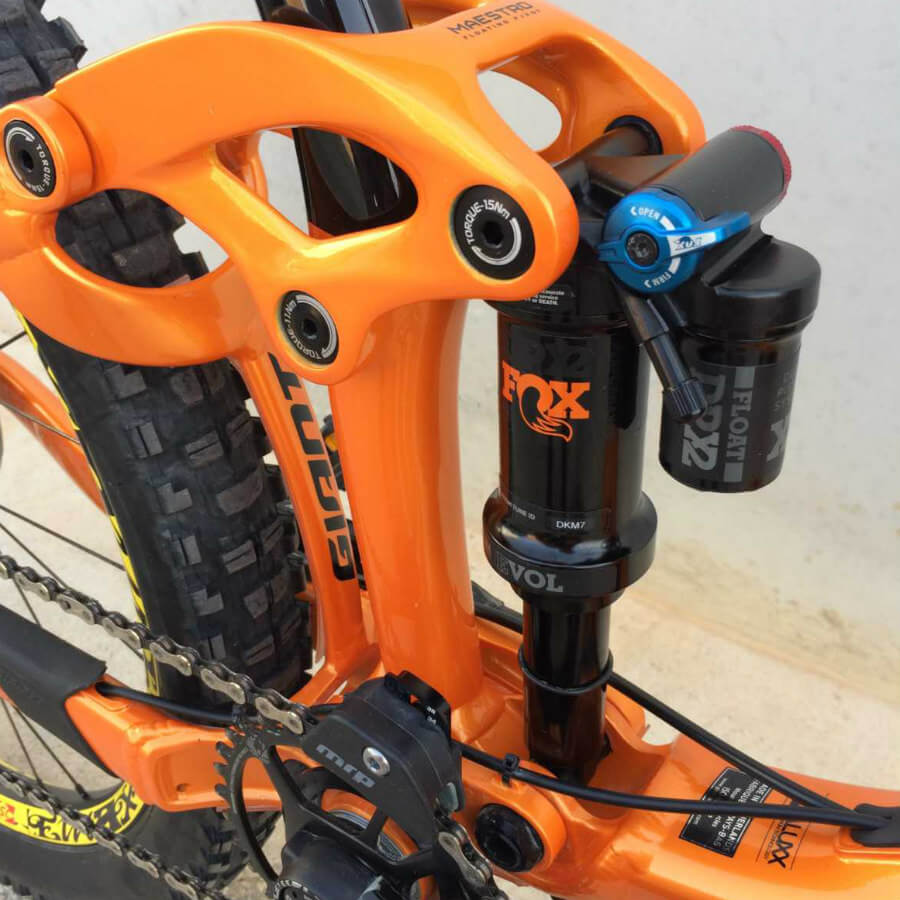
The Giant Reign Giant Master Rear Butigue System is virtual pivot.[/caption]
The use of two union connecting rods generates a sensation of intelligence on the bicycle that is effective in the pedaling and braking. The lower connecting connects, anchored to the Pedalier area, exerts a contrary and similar force to that of damping when the cyclist pedals or brakes.
In this way the suspension hardens during the pedaling and braking, and softens when we do not exert strength on the pedals. Thus, we managed to eliminate much of the contamination in the pedaling and when stopping, providing great comfort by lowering technical zones.
As disadvantages we can comment that it is a system that requires a lot of maintenance and adds weight to the bicycle, since it uses two connecting rods.
Monopive
[Captation id = "Attachment_4060" Align = "Alignnone" Width = "900"]
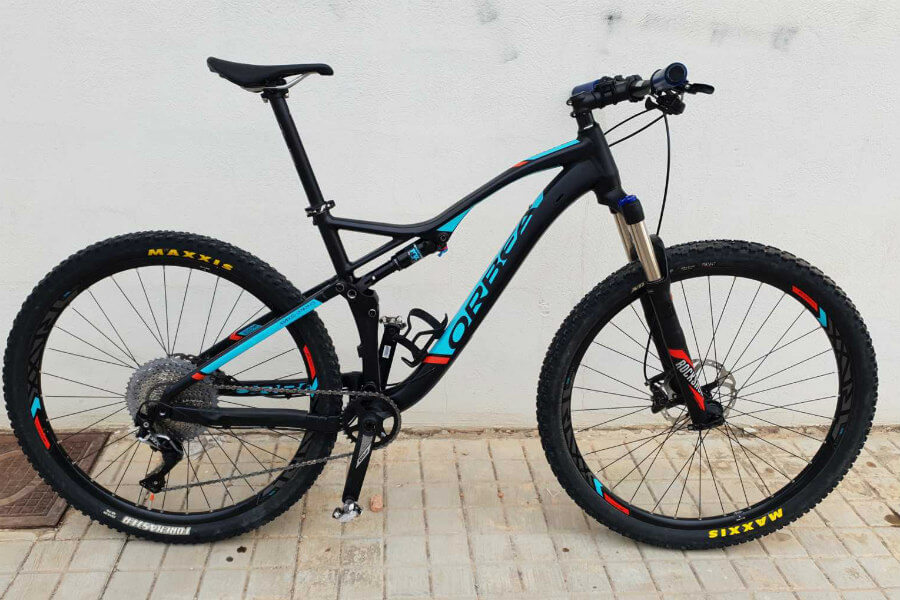
ORBEA OCCAM uses a monopive cushioning system.[/caption]
The sensation of the cyclist in the use of these suspensions is that it becomes softer as the route runs out.
It is a simple and light system, since it only presents a game of bearings. The negative point is that the pedaling and braking contaminates excessively with respect to other types of suspensions.
This is because the swinging pivot with respect to the painting with a single point of articulation, so the forces and moments suffered by the tilting are partially transmitted to the painting.
Articulated monopive

We talk about a hybrid system between the virtual pivot and the monopive. In this case we have a shock absorber with a connecting connection system that manages to eliminate much of the contamination of the pedaling and braking, managing the progression of the shock absorber along its route.
This elimination of pollution greatly influences how and where the shock absorber is placed.
Horst Link
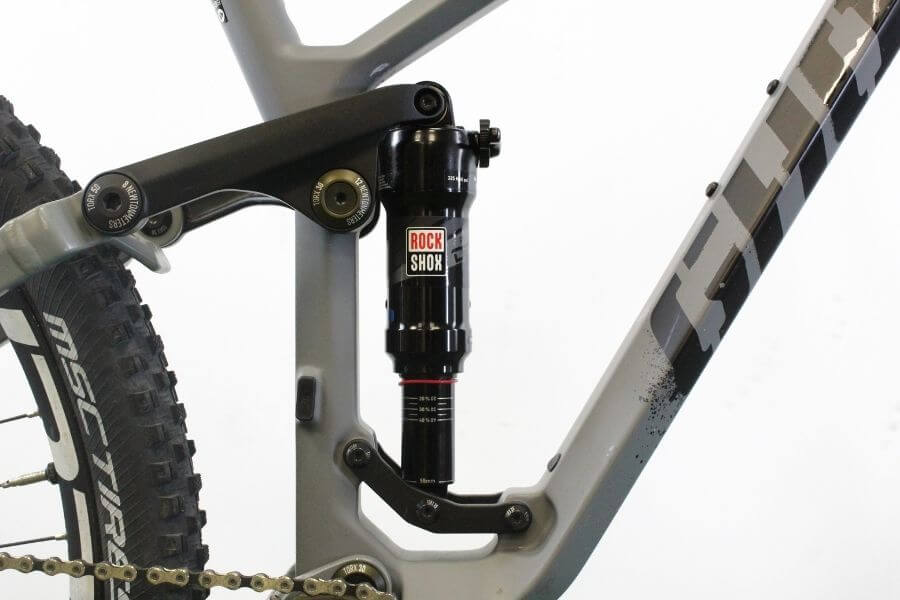
This type of shock absorbers offers a progressive suspension that is hardening as the route ends.
As a positive point we will highlight that the contamination in pedaling and braking is very low, thanks to the fact that there is a pivot point in the sheath, thus breaking the transmission of tilting forces and providing the rear wheel with independence.
The main disadvantage would be the maintenance and weight of the bicycle, since we deal with a more complex rear suspension system based on more articulation points and elements.
Floating cushioning
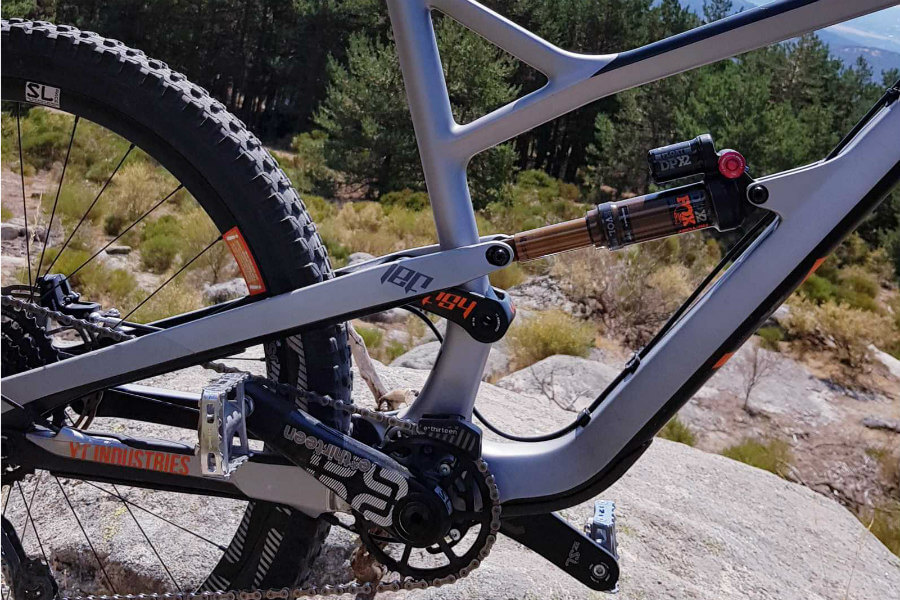
This suspension system is very peculiar, since the shock absorber does not present any union with the painting, but is set by two rods to the tilting.
In this way it is achieved that it can be operated from above and from below, absorbing both the efforts of the pedal and the irregularities of the terrain.
It is widely used in enduro bicycles, and its drive is very soft and progressive. As for its disadvantages, we talk about a heavier type of bicycle and with greater maintenance compared to other damping systems, such as virtual monopive.
Other damping systems
There are other more complex and thoughtful systems for extreme modalities, such as descent or enduro. These are type shock absorbers
Active breaking pivot (either
Split Pivot), the new Fox switch that mounts the American yeti bicycles, or the GT years, which becomes a mixture between the monopive and the
Horst Link.
Finally, I conclude by saying that there are almost as many types of rear suspensions as types of cyclists, so before acquiring a double suspension bicycle it is better to inform yourself and, if possible, try the bike we choose before buying.
A suspension that exerts a very high degree of contamination in the pedaling does not seem the most appropriate for XC or XCM. And one with progressive hardening such as the Horst Link should not be chosen for the practice of descent.
And you, what kind of suspension do you think is the best for the average cyclist? Leave your opinion in the comments.
 Not all bicycle modalities and geometries are equal within mountain cycling. Due to the type of land, speed, ups, decreases, etc. Each modality carries a different suspension route associated.
The suspension route is the depth in millimeters that can compress or spread the front fork bars and rear shock absorber to absorb the irregularities of the terrain. A greater route, greater damping capacity.
>> Guide to understand the different mountain cycling modalities
Not all bicycle modalities and geometries are equal within mountain cycling. Due to the type of land, speed, ups, decreases, etc. Each modality carries a different suspension route associated.
The suspension route is the depth in millimeters that can compress or spread the front fork bars and rear shock absorber to absorb the irregularities of the terrain. A greater route, greater damping capacity.
>> Guide to understand the different mountain cycling modalities
 Depending on the cycling modality that we are going to practice it will be convenient to buy a bicycle with a type of suspension or another. Depending on the wheel on which the suspension acts we can classify mountain bicycles as follows.
Depending on the cycling modality that we are going to practice it will be convenient to buy a bicycle with a type of suspension or another. Depending on the wheel on which the suspension acts we can classify mountain bicycles as follows.
 The Giant Reign Giant Master Rear Butigue System is virtual pivot.[/caption]
The use of two union connecting rods generates a sensation of intelligence on the bicycle that is effective in the pedaling and braking. The lower connecting connects, anchored to the Pedalier area, exerts a contrary and similar force to that of damping when the cyclist pedals or brakes.
In this way the suspension hardens during the pedaling and braking, and softens when we do not exert strength on the pedals. Thus, we managed to eliminate much of the contamination in the pedaling and when stopping, providing great comfort by lowering technical zones.
As disadvantages we can comment that it is a system that requires a lot of maintenance and adds weight to the bicycle, since it uses two connecting rods.
The Giant Reign Giant Master Rear Butigue System is virtual pivot.[/caption]
The use of two union connecting rods generates a sensation of intelligence on the bicycle that is effective in the pedaling and braking. The lower connecting connects, anchored to the Pedalier area, exerts a contrary and similar force to that of damping when the cyclist pedals or brakes.
In this way the suspension hardens during the pedaling and braking, and softens when we do not exert strength on the pedals. Thus, we managed to eliminate much of the contamination in the pedaling and when stopping, providing great comfort by lowering technical zones.
As disadvantages we can comment that it is a system that requires a lot of maintenance and adds weight to the bicycle, since it uses two connecting rods.
 ORBEA OCCAM uses a monopive cushioning system.[/caption]
The sensation of the cyclist in the use of these suspensions is that it becomes softer as the route runs out.
It is a simple and light system, since it only presents a game of bearings. The negative point is that the pedaling and braking contaminates excessively with respect to other types of suspensions.
This is because the swinging pivot with respect to the painting with a single point of articulation, so the forces and moments suffered by the tilting are partially transmitted to the painting.
ORBEA OCCAM uses a monopive cushioning system.[/caption]
The sensation of the cyclist in the use of these suspensions is that it becomes softer as the route runs out.
It is a simple and light system, since it only presents a game of bearings. The negative point is that the pedaling and braking contaminates excessively with respect to other types of suspensions.
This is because the swinging pivot with respect to the painting with a single point of articulation, so the forces and moments suffered by the tilting are partially transmitted to the painting.
 We talk about a hybrid system between the virtual pivot and the monopive. In this case we have a shock absorber with a connecting connection system that manages to eliminate much of the contamination of the pedaling and braking, managing the progression of the shock absorber along its route.
This elimination of pollution greatly influences how and where the shock absorber is placed.
We talk about a hybrid system between the virtual pivot and the monopive. In this case we have a shock absorber with a connecting connection system that manages to eliminate much of the contamination of the pedaling and braking, managing the progression of the shock absorber along its route.
This elimination of pollution greatly influences how and where the shock absorber is placed.
 This type of shock absorbers offers a progressive suspension that is hardening as the route ends.
As a positive point we will highlight that the contamination in pedaling and braking is very low, thanks to the fact that there is a pivot point in the sheath, thus breaking the transmission of tilting forces and providing the rear wheel with independence.
The main disadvantage would be the maintenance and weight of the bicycle, since we deal with a more complex rear suspension system based on more articulation points and elements.
This type of shock absorbers offers a progressive suspension that is hardening as the route ends.
As a positive point we will highlight that the contamination in pedaling and braking is very low, thanks to the fact that there is a pivot point in the sheath, thus breaking the transmission of tilting forces and providing the rear wheel with independence.
The main disadvantage would be the maintenance and weight of the bicycle, since we deal with a more complex rear suspension system based on more articulation points and elements.
 This suspension system is very peculiar, since the shock absorber does not present any union with the painting, but is set by two rods to the tilting.
In this way it is achieved that it can be operated from above and from below, absorbing both the efforts of the pedal and the irregularities of the terrain.
It is widely used in enduro bicycles, and its drive is very soft and progressive. As for its disadvantages, we talk about a heavier type of bicycle and with greater maintenance compared to other damping systems, such as virtual monopive.
This suspension system is very peculiar, since the shock absorber does not present any union with the painting, but is set by two rods to the tilting.
In this way it is achieved that it can be operated from above and from below, absorbing both the efforts of the pedal and the irregularities of the terrain.
It is widely used in enduro bicycles, and its drive is very soft and progressive. As for its disadvantages, we talk about a heavier type of bicycle and with greater maintenance compared to other damping systems, such as virtual monopive.












